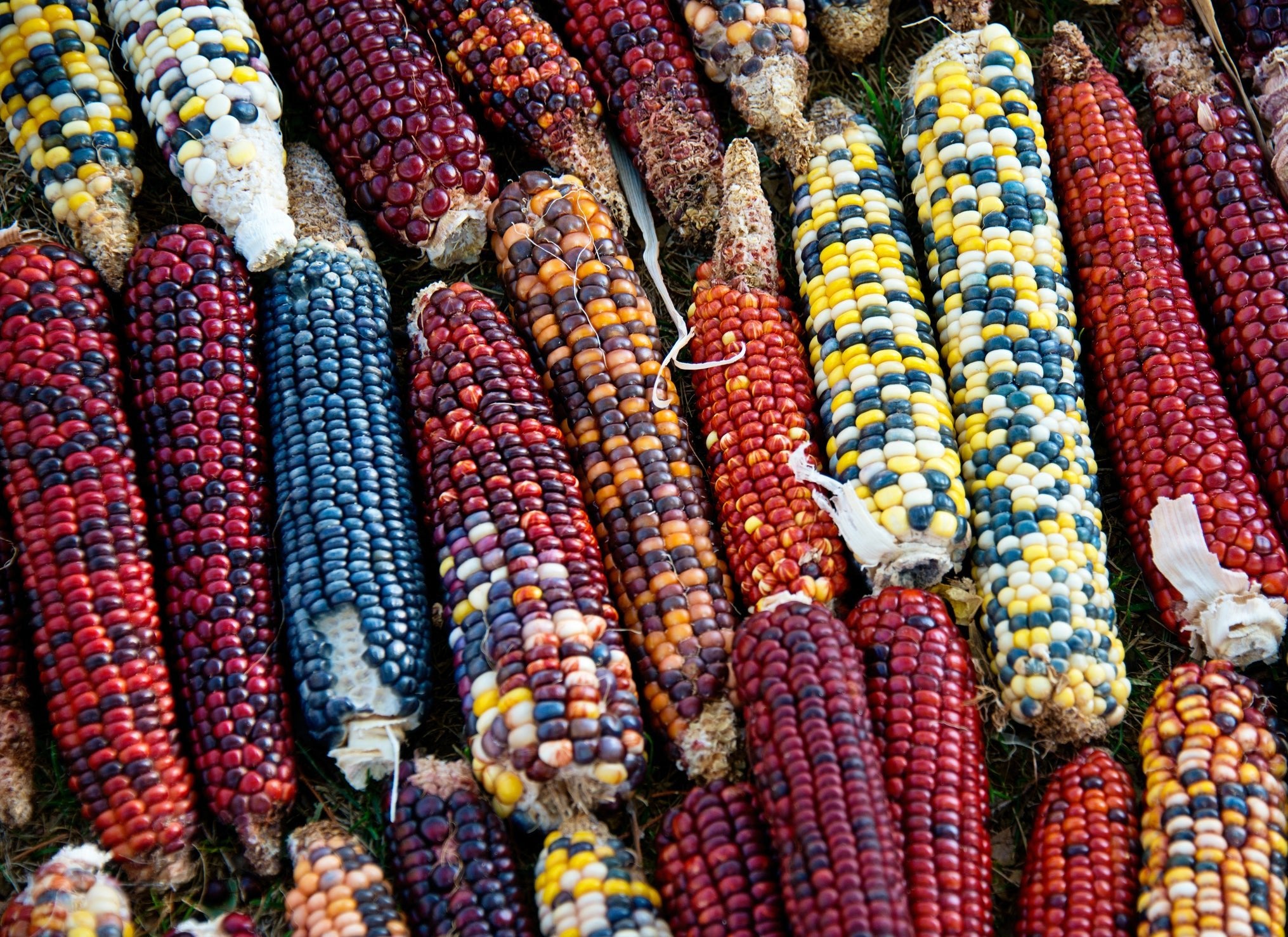
The Evolution of Corn
We don’t always get too excited about dietary staples, but there’s something about corn that we just can’t resist. Maybe it’s the subtle sweetness, or the way it puffs up into a fluffy, light snack. More likely (in our case, anyway) it’s the crunch of hand-cut corn tortilla chips ground with volcanic lava stone, the way it’s done traditionally in Mexico.
But corn wasn’t always the most productive and adaptable grain on earth. While today corn grows and thrives on every continent (except Antartica, of course), it has humble origins.
Just seven thousand years ago, corn as we know it didn’t exist. Instead, wild grasses flourished in Central America. The Native Americans of the region saw the potential in one particular variety known as teosinte. Teosinte offered the first hints of what could be corn, but the kernels were tiny and very tough – and there were only a handful of them per ear. In fact, teosinte is so different from corn that even botanists once doubted the two could be related.
 Native Americans slowly cultivated these wild grasses by choosing seeds from the plants that were best suited for a meal. Over many generations, they succeeded in growing larger ears and softer – more delicious – kernels. From all accounts, teosinte wasn’t nearly as delicious as what we call corn these days, so we owe a big thank you to those first brave souls for keeping at it.
The multi-coloured maize that resulted was so important to those living in Central America that they had deities and cultural rites dedicated to the plant. When European settlers arrived in the Americas, they were so taken with corn – especially the sweeter yellow variety – that they carried this yellow gold home with them. It wasn’t long before corn began sprouting across the world.
We couldn’t be happier that corn evolved from an inedible wild grass to the snack-time star it is today. It’s no surprise that we have a soft spot for tortilla chips. What’s your favourite way to prepare corn?
Native Americans slowly cultivated these wild grasses by choosing seeds from the plants that were best suited for a meal. Over many generations, they succeeded in growing larger ears and softer – more delicious – kernels. From all accounts, teosinte wasn’t nearly as delicious as what we call corn these days, so we owe a big thank you to those first brave souls for keeping at it.
The multi-coloured maize that resulted was so important to those living in Central America that they had deities and cultural rites dedicated to the plant. When European settlers arrived in the Americas, they were so taken with corn – especially the sweeter yellow variety – that they carried this yellow gold home with them. It wasn’t long before corn began sprouting across the world.
We couldn’t be happier that corn evolved from an inedible wild grass to the snack-time star it is today. It’s no surprise that we have a soft spot for tortilla chips. What’s your favourite way to prepare corn?
 Native Americans slowly cultivated these wild grasses by choosing seeds from the plants that were best suited for a meal. Over many generations, they succeeded in growing larger ears and softer – more delicious – kernels. From all accounts, teosinte wasn’t nearly as delicious as what we call corn these days, so we owe a big thank you to those first brave souls for keeping at it.
The multi-coloured maize that resulted was so important to those living in Central America that they had deities and cultural rites dedicated to the plant. When European settlers arrived in the Americas, they were so taken with corn – especially the sweeter yellow variety – that they carried this yellow gold home with them. It wasn’t long before corn began sprouting across the world.
We couldn’t be happier that corn evolved from an inedible wild grass to the snack-time star it is today. It’s no surprise that we have a soft spot for tortilla chips. What’s your favourite way to prepare corn?
Native Americans slowly cultivated these wild grasses by choosing seeds from the plants that were best suited for a meal. Over many generations, they succeeded in growing larger ears and softer – more delicious – kernels. From all accounts, teosinte wasn’t nearly as delicious as what we call corn these days, so we owe a big thank you to those first brave souls for keeping at it.
The multi-coloured maize that resulted was so important to those living in Central America that they had deities and cultural rites dedicated to the plant. When European settlers arrived in the Americas, they were so taken with corn – especially the sweeter yellow variety – that they carried this yellow gold home with them. It wasn’t long before corn began sprouting across the world.
We couldn’t be happier that corn evolved from an inedible wild grass to the snack-time star it is today. It’s no surprise that we have a soft spot for tortilla chips. What’s your favourite way to prepare corn?







